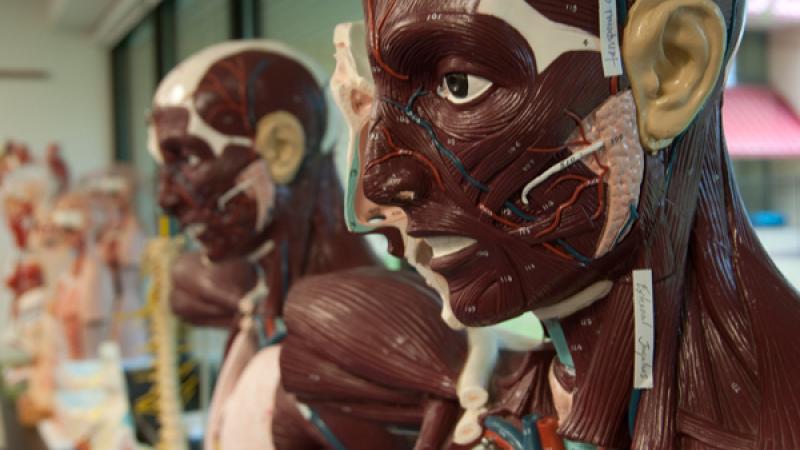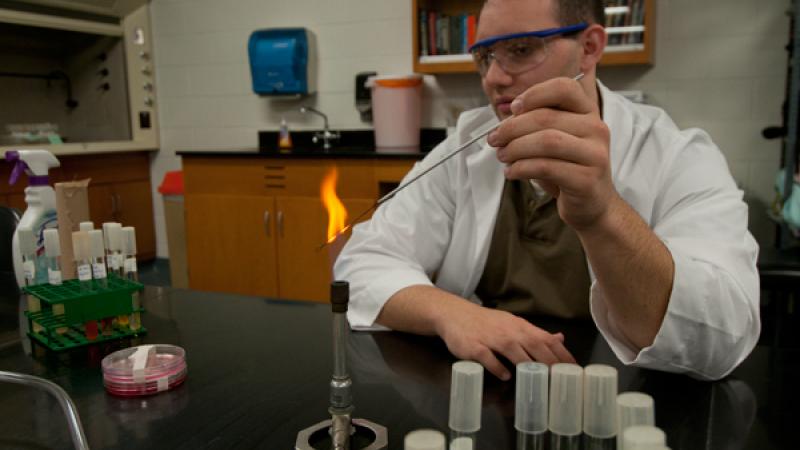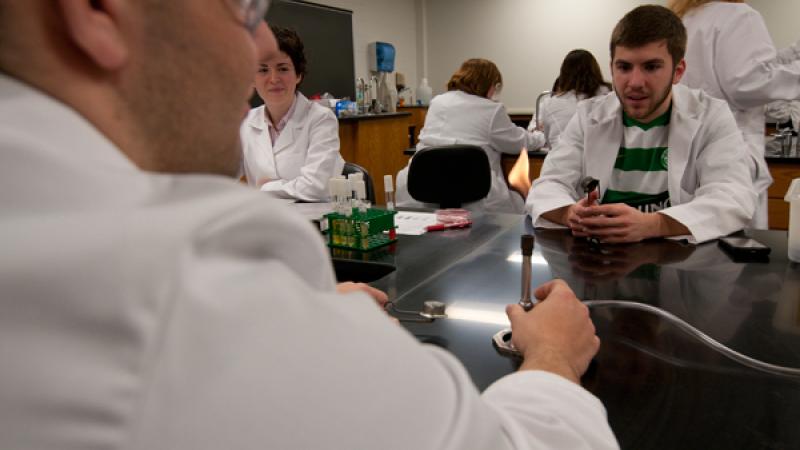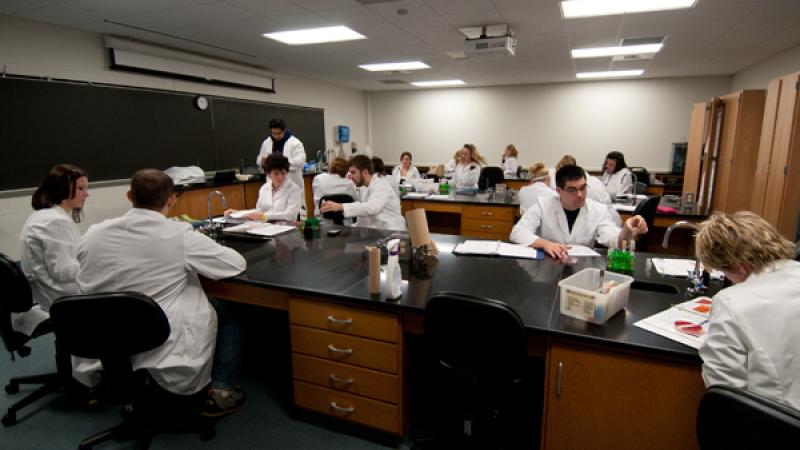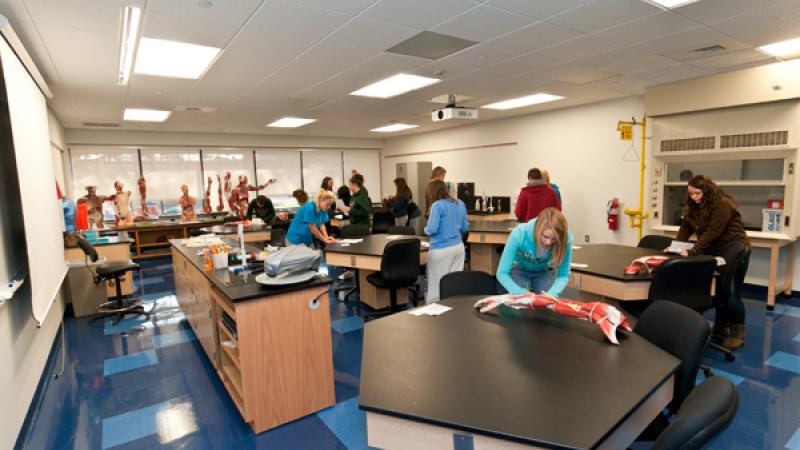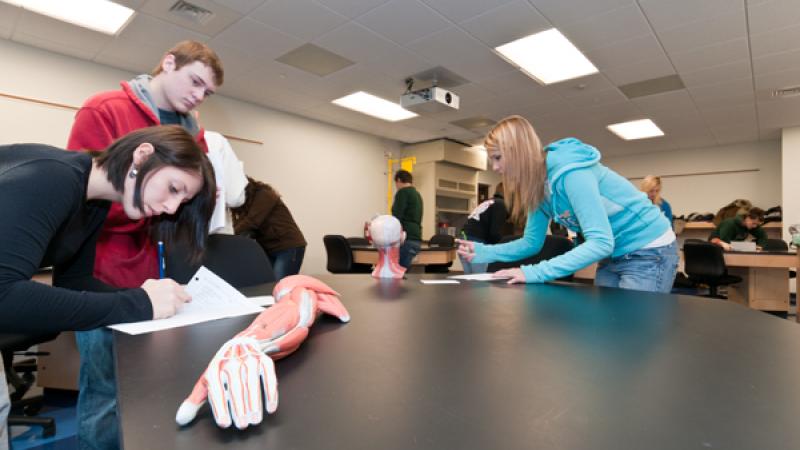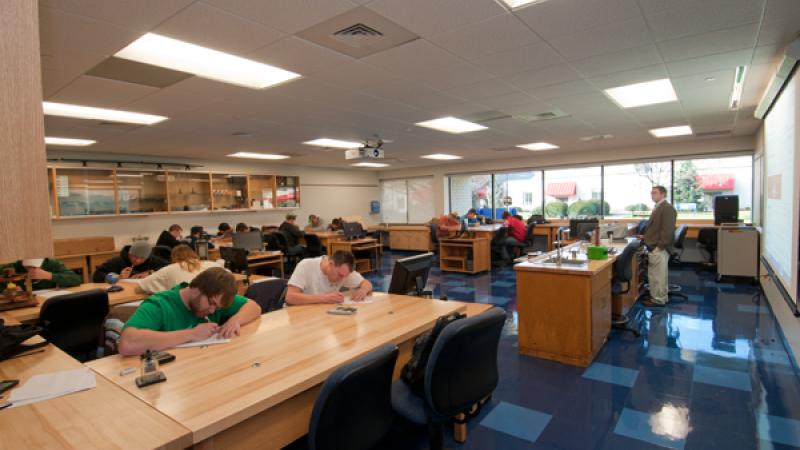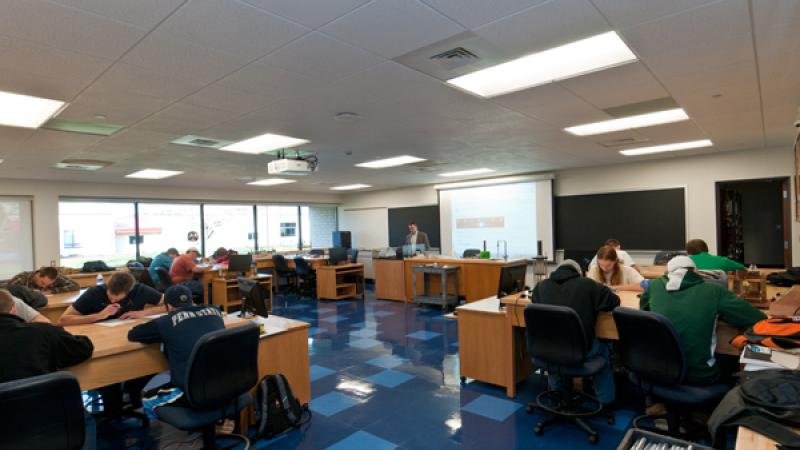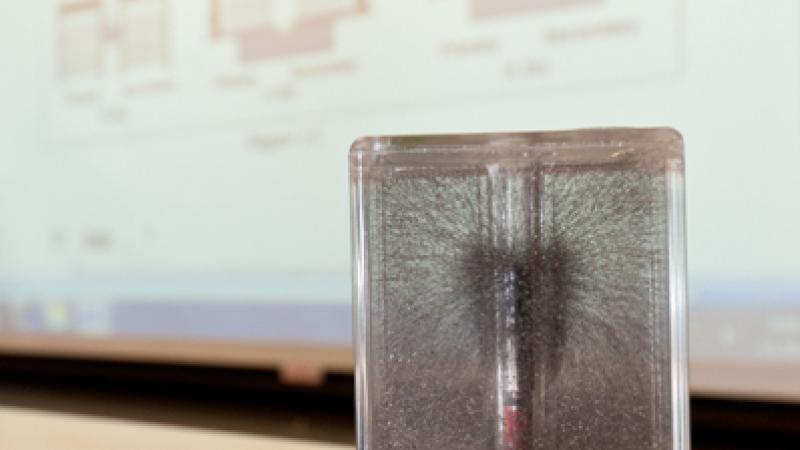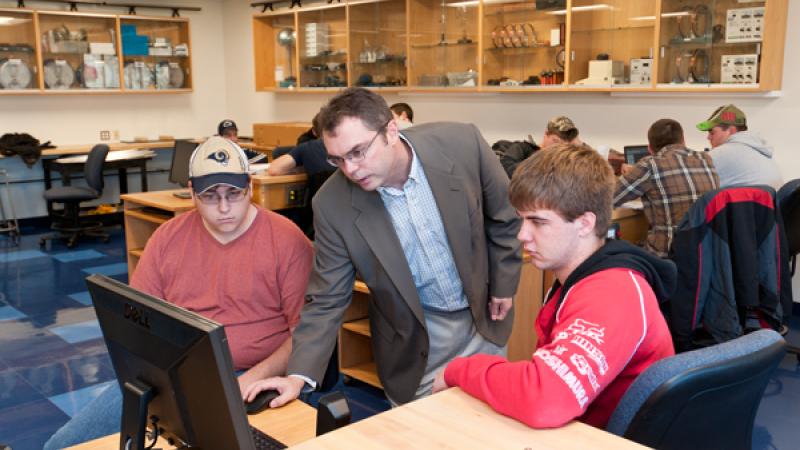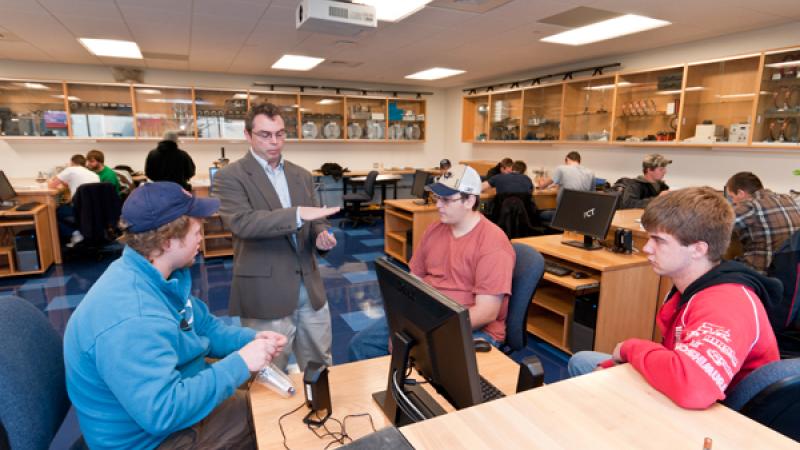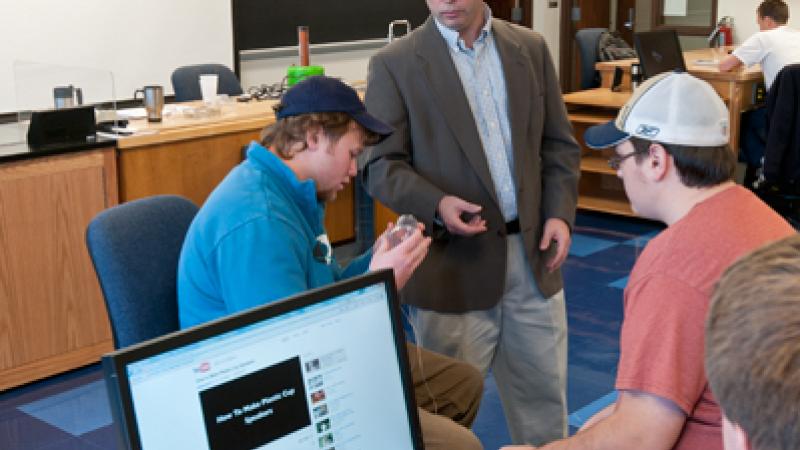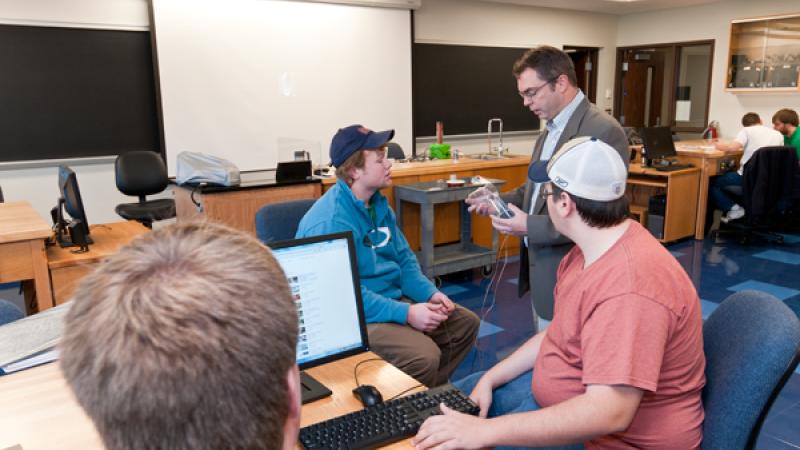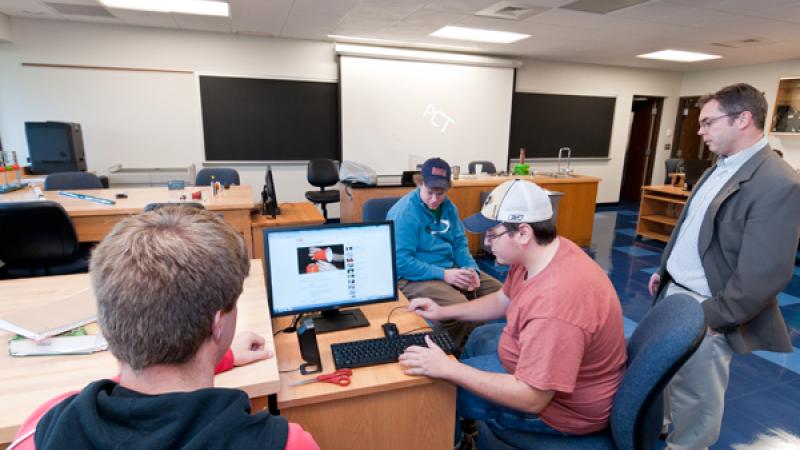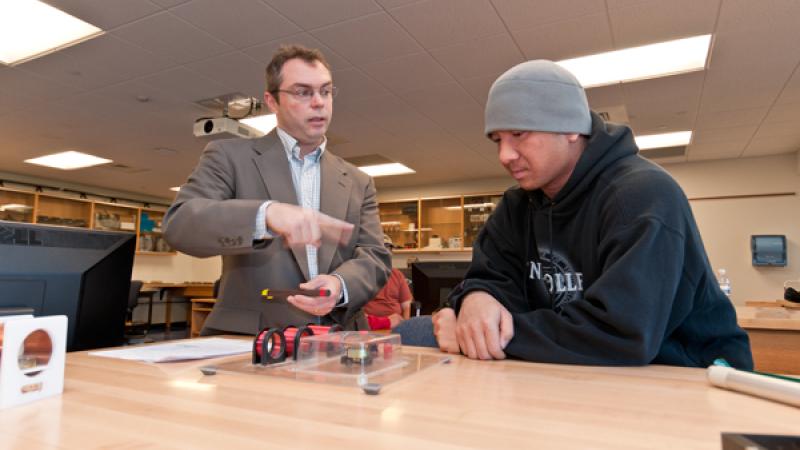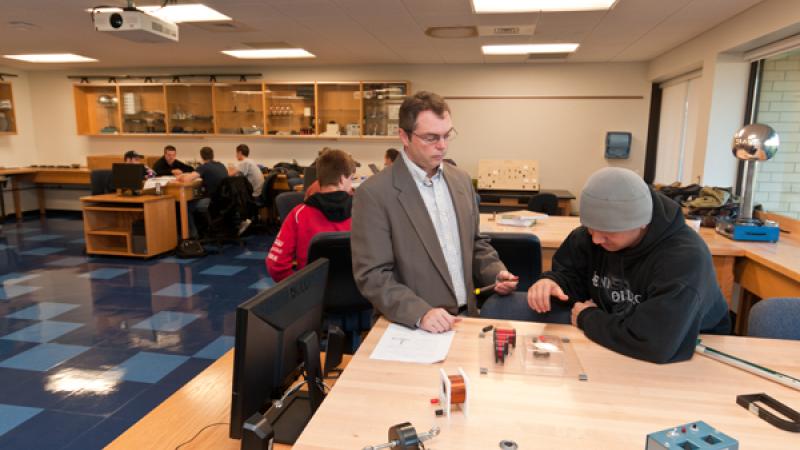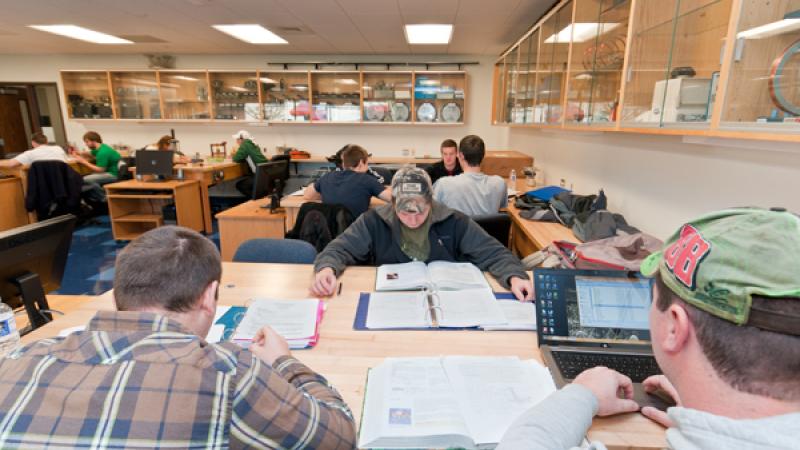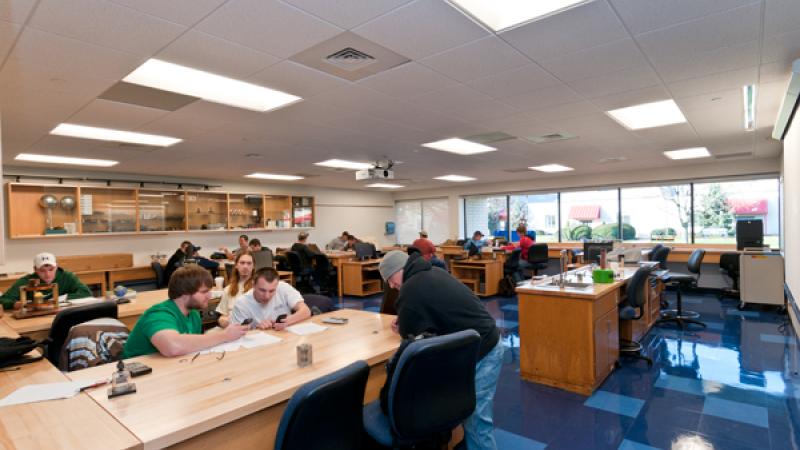matches /academics/bas/core-courses/natural-sciences-department ... percision: 3 of
Pennsylvania College of Technology's Natural Sciences Department goal is to not only provide students with scientific knowledge, but also to inspire students to wonder and be amazed by the world around them. As far back as Aristotle, humans have sought to understand their world. The need to understand why things behave in a certain way, and trying to link observation with prediction, has always been the catalyst for progress and change. We pride ourselves in small student-to-faculty ratios in all classes. Most students have the same instructor for lecture and lab, and we utilize state-of-the-art equipment in both lecture halls and laboratories.
The Natural Sciences Department is a vital part of the School of Business, Arts, & Sciences and consists of three major curricular areas:
The department also offers traditional, interdisciplinary, and specialized courses in Geology, Environmental Science, Physical Science, Astronomy, and Forensic Science.
About the curriculum
Biology is an exciting and growing field with many opportunities for careers in genetics, microbiology, immunology, and entomology. Penn College is an excellent place to start, since we have small class sizes and modern laboratories. Lecture sections never exceed 48 students, and lab classes never exceed 24 students.
We have four fully-equipped labs and five lecture rooms. Each lecture hall has a full complement of multi-media apparatus to make your learning experience as enjoyable and exciting as possible. Join us, and take one of our many fine courses, such as:
Did you ever wonder what was in your drinking water? What makes water hard or soft? How does the salt on the road help “melt” the ice? For that matter, why does salt “eat” your car? Why is the ozone hole disappearing? These are just a few questions that can be answered by knowing a little chemistry.
At Penn College, we offer a wide range of chemistry classes that meet the needs of all our students. If you’ve never had chemistry, you can be introduced to the subject by taking General Chemistry. On the other hand, if you find chemistry as exciting as we do, then you might want to take Organic Chemistry I and Organic I Lab. For those pursuing degrees outside the science field, you may elect to take Science in Modern Society online. These are just a few examples of the chemistry courses that the Natural Sciences department offers.
The physics "department" is not a department in and of itself, but rather a subdivision of a larger scientific community at the College called the Department of Natural Sciences.
We have two physics labs each with six computers and interfaces containing software for obtaining and analyzing data. All lecture rooms are equipped with a full complement of multi-media equipment. Lecture courses are usually limited to 40-48 students, and laboratory sections are limited to 20-24 students.
Penn College offers general science courses in addition to biology, chemistry and physics. These courses are generally used by students to fulfill their science electives.
Some areas of interest include:
Physics Laboratories
We have two physics laboratories, each with six work stations. Every station has its own computer, including PSL interfaces for collecting real-time data, f(g) scholar software, Excel, and Internet access. The physics lecture hall is a fully equipped multi-media room with DVD / VHS / Laserdisk players, a modern projection system, Internet access, remote satellite hookup, a computer interface with PSL hardware for lecture demonstrations, and remote control Personal Response System for classroom assessment.
Class size varies depending on the course (usually less than 30 students). The laboratories have a maximum capacity of 24 students (usually 15-20 students per section).
matches /academics/bas/core-courses/natural-sciences-department ... percision: 3 of

